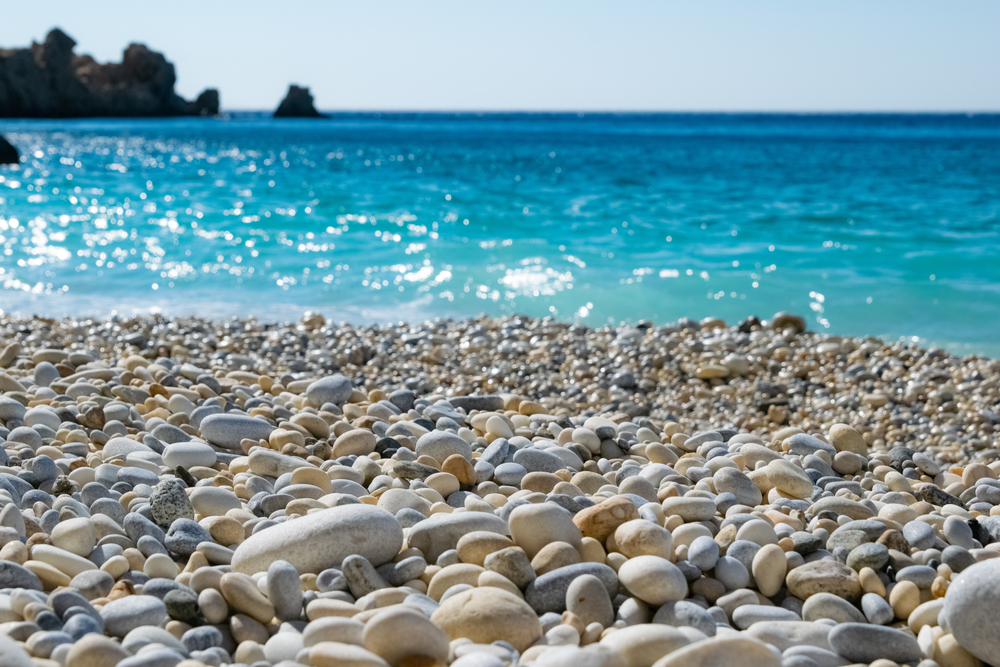Your cart is currently empty!
A Flesh-Eating Bacteria is Spreading Across the South-Here’s How to Stay Safe

Imagine wading into warm, waist-deep waves on a Gulf Coast afternoon sunlight glinting off the water, salt on your skin only to learn that the same inviting sea may be harboring a rare but deadly threat. A bacterium called Vibrio vulnificus is making headlines for all the wrong reasons. Known as a “flesh-eating” bacteria, it has already been linked to multiple deaths this year in states like Florida and Louisiana, and cases are surfacing farther north than ever before.
Though infections remain uncommon compared to the millions of people who safely swim and eat seafood each summer, what makes Vibrio vulnificus so unsettling is how swiftly it can turn from invisible nuisance to medical emergency. A scrape from a seashell, a new tattoo, even a taste of raw oysters can be enough for the bacteria to slip inside the body. Within hours, mild redness can escalate into fever, blisters, and life-threatening complications.
As climate change fuels warmer waters and stronger storms, experts warn that these infections may no longer be confined to the Gulf Coast. Health officials have even documented cases as far north as Massachusetts, signaling that the risk is spreading along with rising ocean temperatures.
The question isn’t whether we should avoid the beach altogether it’s how we can continue to enjoy it safely while being aware of the risks.
What Is Vibrio Vulnificus?
Vibrio vulnificus is a naturally occurring bacterium that thrives in warm, brackish, or salty waters, particularly along the Gulf Coast and increasingly further north along the Atlantic seaboard. While there are over 100 species of Vibrio bacteria most of them harmless V. vulnificus is the most dangerous to humans. The CDC notes that although only about 150 to 200 cases are reported each year in the U.S., the infection can be fatal in one out of every five patients.
The “flesh-eating” label is somewhat misleading these bacteria do not literally consume tissue. Instead, they release toxins that destroy skin cells and the connective tissue beneath them, causing rapid tissue death, a condition known as necrotizing fasciitis. This can transform a minor cut or scrape into a medical emergency within hours.
Infections occur in two primary ways: through direct contact when an open wound meets contaminated seawater, or through the consumption of raw or undercooked shellfish, especially oysters. Once inside the body, the bacteria can multiply quickly, sometimes spreading from the initial wound into the bloodstream. The Florida Department of Health warns that when Vibrio enters the blood, the fatality rate can rise to 50 percent.
Though alarming, it’s important to remember that these infections remain rare. Millions of people enjoy coastal waters and seafood each year without incident. What makes Vibrio vulnificus particularly concerning is not its frequency but its severity and the fact that warmer seas are creating more opportunities for it to thrive.
Where and Why Cases Are Rising

Traditionally, Vibrio vulnificus infections have been most common along the Gulf Coast, where warm, brackish waters create an ideal environment for the bacteria. Florida and Louisiana see the highest annual case numbers, but recent reports reveal an unsettling trend: infections are appearing farther north, with cases documented in states like Maryland, Virginia, and even Massachusetts. In 2025 alone, at least 72 confirmed cases have been reported across 12 states, with Louisiana and Florida accounting for the majority.
What makes this surge particularly concerning is the scale of increase in some regions. Louisiana, for example, typically reports around seven cases and one death per year. This summer, the state recorded 17 cases and four deaths by midseason a sharp rise that prompted health officials to issue public warnings. Florida has reported 16 cases and five deaths so far, while other coastal states are also seeing smaller but notable numbers.
Experts point to environmental shifts as a driving force behind the spread. Vibrio bacteria thrive in warm water, and as global temperatures rise, the conditions for their survival are expanding. “The actual numbers are increasing very steadily … especially in the last six, seven years,” says Salvador Almagro-Moreno, Ph.D., a pathogen researcher at St. Jude’s Children’s Research Hospital. In fact, CDC data suggest that Vibrio’s range has been moving northward at roughly 48 kilometers per year.
Extreme weather events also play a role. Hurricanes, heavy rains, and flooding push the bacteria into new areas, sometimes contaminating freshwater systems or increasing exposure risks after storms. In 2024, for instance, Florida saw an unusual spike in infections following Hurricane Helene. With climate change fueling both warmer seas and stronger storms, public health experts anticipate that cases could become both more common and more geographically widespread.
Symptoms and Warning Signs to Watch For

One of the most troubling aspects of Vibrio vulnificus is how quickly an infection can progress. What may start as a patch of redness around a small cut can escalate into severe illness in a matter of hours. The CDC warns that symptoms often appear within 12 to 24 hours of exposure, though in some cases they can begin even sooner.
Early symptoms may include:
- Redness, warmth, or swelling around a wound
- Pain that feels disproportionate to the size of the injury
- Fever and chills
- Nausea, vomiting, or diarrhea if infection stems from eating contaminated shellfish
As the infection advances, more alarming signs can appear:
- Fluid-filled blisters near the wound site
- Skin discoloration or rapidly spreading rash
- Low blood pressure, weakness, or dizziness
- Confusion or altered mental state
- Rapid heartbeat and fatigue
In severe cases, the infection can enter the bloodstream and trigger septic shock or necrotizing fasciitis—the destruction of muscle and skin tissue. These conditions may require intensive care, surgical removal of infected tissue, or even amputation. The Florida Department of Health estimates that bloodstream infections with Vibrio vulnificus carry a fatality rate of about 50 percent.
Doctors emphasize that early medical attention is critical. Brandon Dionne, PharmD, a clinical pharmacist specializing in infectious diseases at Northeastern University, advises: “If you’ve been to the beach and experience pain or redness at a wound site, that’s your sign to get evaluated immediately.” Prompt treatment with antibiotics and, if needed, surgical intervention can make the difference between recovery and life-threatening complications.
Who Is Most at Risk
While anyone can contract a Vibrio vulnificus infection, certain groups of people face a far greater risk of severe illness or death. Age, underlying health conditions, and immune function all play a role in how the body responds to the bacteria.
High-risk groups include:
- Older adults (65+) – Aging immune systems are less efficient at fighting off aggressive infections.
- People with chronic liver disease – Conditions like cirrhosis or hepatitis compromise the body’s ability to filter toxins and fight infections.
- Individuals with diabetes or kidney disease – These conditions weaken the immune system and slow wound healing, making it easier for bacteria to spread.
- Immunocompromised individuals – Those undergoing chemotherapy, taking immunosuppressive medications, or living with conditions such as HIV/AIDS face elevated risks of life-threatening complications.
Statistics reinforce these concerns. The Louisiana Department of Health has found that about 75% of its recent Vibrio vulnificus cases were linked to wound exposure, and many occurred in people with pre-existing health conditions. Once the infection spreads to the bloodstream, fatality rates climb steeply—around 20% overall, but up to 50% in the most severe cases, according to state and federal health officials.
How to Protect Yourself

Health experts stress that while Vibrio vulnificus infections can be devastating, they are also largely preventable. The key is recognizing where risks lie and taking simple steps to minimize exposure.
When swimming or wading in coastal waters:
- Avoid water contact if you have open wounds. This includes cuts, scrapes, surgical incisions, new tattoos, or piercings. Even a razor nick can provide an entry point for bacteria.
- Cover wounds with waterproof bandages if you plan to be near or in the water.
- Wear protective footwear. Shoes can prevent cuts from shells or rocks and reduce the chance of bacteria entering through small abrasions.
- Wash thoroughly after exposure. If seawater or brackish water contacts broken skin, rinse the area immediately with soap and clean running water.
When eating seafood:
- Cook shellfish thoroughly. The CDC recommends cooking oysters and other shellfish to an internal temperature of 145°F to kill harmful bacteria.
- Avoid raw or undercooked oysters, especially if you belong to a high-risk group.
- Handle seafood safely. Wash hands after handling raw shellfish and disinfect any kitchen surfaces that come into contact with raw juices.
If you’re in a higher-risk category older adults, immunocompromised individuals, or those with chronic conditions doctors recommend exercising extra caution. Even indirect exposures, such as cleaning raw seafood or being around floodwaters, can be enough to trigger an infection.
Ultimately, experts emphasize that no one needs to give up the beach or seafood entirely. Instead, it’s about making informed choices. As the Louisiana Department of Health advises, those at greater risk should “exercise caution when engaging in coastal water activities.” Awareness, combined with preventive steps, goes a long way in reducing the odds of infection while still allowing people to enjoy summer traditions safely.
Treatment and What to Expect

When it comes to Vibrio vulnificus, time is critical. Doctors emphasize that early recognition and rapid treatment can mean the difference between recovery and life-threatening complications. Because the infection can progress so quickly, patients showing symptoms after seawater exposure or raw shellfish consumption should seek medical attention immediately.
First-line treatment is a combination of antibiotics. Infectious disease specialists often use doxycycline together with a cephalosporin such as ceftazidime. “We typically use two antibiotics… to ensure that at least one of them is active, but also because doxycycline helps reduce toxin production,” explains Brandon Dionne, PharmD, a clinical pharmacist at Northeastern University. Patients usually require several weeks of antibiotics while the body heals.
Surgical intervention is often necessary. A procedure called debridement may be performed to remove dead or infected tissue so that healthy tissue can regrow. In severe cases, where the bacteria have caused extensive necrosis, amputation may be the only option to prevent the infection from spreading further.
Hospital care may involve intensive support. If the infection spreads to the bloodstream, patients often require admission to an intensive care unit for monitoring, intravenous antibiotics, and medications to stabilize blood pressure. Supportive care may also include fluids and treatment for sepsis.
Outcomes depend heavily on how quickly treatment begins. According to the Florida Department of Health, once Vibrio vulnificus reaches the bloodstream, fatality rates can climb as high as 50 percent. But when caught early before the infection spreads antibiotics and surgery are often effective.
For survivors, recovery can be long, involving wound care, physical therapy, and in some cases, adapting to life after tissue loss. Yet with vigilance and timely intervention, many people do make full recoveries. The crucial step is not to dismiss symptoms after potential exposure what looks like a “simple” wound infection can, in reality, be a medical emergency.
Climate, Coastal Living, and Safety

The rise in Vibrio vulnificus infections is not occurring in isolation. Scientists and public health officials point to a larger pattern: as global temperatures climb, the environments where these bacteria thrive are expanding. Warmer seas allow Vibrio to survive longer and in higher concentrations, while extreme weather events hurricanes, floods, and storm surges spread the bacteria into new areas and increase the chances of human contact.
This shift is already measurable. Research suggests that Vibrio bacteria are moving northward along the U.S. East Coast by roughly 48 kilometers (about 30 miles) per year, with confirmed infections now appearing in states like Maryland and Massachusetts. Florida has seen sharp increases in recent years, with spikes linked to hurricane-related flooding. Experts warn that as coastal waters heat further, the geographic range and length of “vibrio season” could expand, exposing more communities to risk.
At the same time, it’s important to balance perspective. While cases are rising, they remain relatively rare compared to the millions of people who safely swim, fish, and enjoy seafood every summer. The difference now is that awareness matters more than ever especially for those at higher risk of severe illness. Knowing when to cover a wound, skip raw oysters, or seek medical help quickly can dramatically reduce the danger.
Coastal living and beach vacations have always carried inherent risks, from rip currents to jellyfish stings. Vibrio vulnificus is another reminder of how closely human health is tied to environmental conditions. With thoughtful precautions and increased awareness, it is possible to continue enjoying the water and the seafood that so many coastal communities depend on while respecting the reality of a changing climate and its impact on public health.
Awareness Is the Best Protection
The stories of Vibrio vulnificus infections are undeniably sobering, but they don’t need to overshadow the joys of coastal living. For most people, a day at the beach or a plate of seafood carries no threat at all. The difference lies in awareness. Understanding how this bacterium spreads, recognizing early warning signs, and taking simple precautions like avoiding seawater with an open wound or cooking oysters thoroughly can dramatically reduce the risk.
At the same time, the spread of Vibrio vulnificus serves as a broader reminder of how climate and health are intertwined. Warmer oceans and stronger storms are shifting the boundaries of where certain risks exist, making vigilance more important than ever. Still, with the right knowledge, we can adapt. By respecting both the beauty and the hazards of our changing coastal environment, we can protect ourselves and those most vulnerable while continuing to enjoy the very waters and traditions that define summer.
The bottom line: don’t let fear replace fun, but let awareness guide your choices. Stay informed, stay cautious, and most importantly, stay safe.
